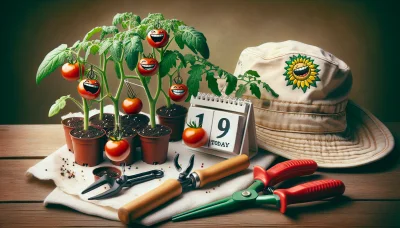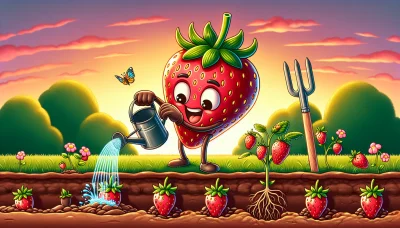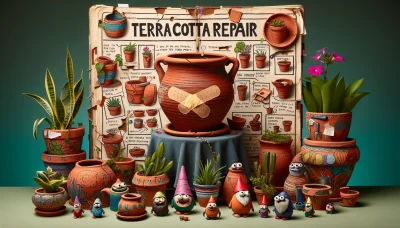Lime powder uses Quiz
Test Your Knowledge
Question of
The Versatile Uses of Lime Powder in Gardening
Lime powder, often derived from crushed limestone, plays a crucial role in gardening by enhancing soil quality and promoting healthy plant growth. It works by increasing the soil's pH level, making it less acidic and more alkaline, which is essential for the absorption of nutrients by plants. This adjustment in pH levels can significantly improve the availability of key nutrients such as nitrogen, phosphorus, and potassium, which are vital for plant health. Additionally, lime powder can help to break down heavy soils, improving aeration and drainage, and thus creating a better root environment for plants. Its application not only benefits the soil but also helps in preventing common garden problems such as moss growth, and fungal diseases, and can deter pests. Therefore, incorporating lime powder into garden maintenance routines can lead to lush, thriving plant life by creating an optimal growing environment.
Understanding Lime Powder
Lime powder, commonly referred to as quicklime or calcium oxide, is a widely used chemical compound with the formula CaO. It is derived from limestone or chalk, which are composed primarily of calcium carbonate (CaCO3 ) through a process known as calcination. This process involves heating the limestone at high temperatures, typically around 900°C to 1000°C, in a kiln to drive off carbon dioxide (CO2 ), leaving behind the desired lime powder. This white, caustic, alkaline substance has a variety of applications, ranging from construction, where it is used in cement and mortar, to agriculture, where it serves to adjust soil pH levels, among other uses.
Top 7 Uses of Lime Powder in Your Garden
- Soil pH Adjustment: Lime powder is an excellent soil amendment for raising the pH of acidic soil, making it more alkaline and suitable for a variety of plants.
- Pest Control: Sprinkling lime powder around the garden can help deter certain pests, such as fleas and ants, from invading your plant beds.
- Nutrient Enhancement: Lime can provide essential nutrients like calcium and magnesium to the soil, which are crucial for plant growth and development.
- Moss and Weed Prevention: By adjusting soil pH, lime powder makes the environment less hospitable for moss and weed growth, helping to keep your garden tidy.
- Improves Soil Structure: Lime can help break down heavy soils such as clay, improving aeration and drainage, and making it easier for roots to grow.
- Disease Prevention: Healthy, well-balanced soil promotes strong plant growth, reducing the risk of diseases that can thrive in more acidic conditions.
- Enhanced Water Penetration: By improving soil structure and reducing surface crusting, lime application can enhance water penetration, ensuring that plants receive adequate moisture.
How to Apply Lime Powder in Your Garden
Applying lime powder to your garden soil can be a great way to adjust the pH level, ensuring your plants thrive. The best time to apply lime is in the fall, giving it several months to react with the soil before the next growing season. Start by testing your soil's pH to determine the amount of lime needed. For application, evenly spread the lime powder over the soil surface, using a spreader for larger areas to ensure uniform coverage. It's essential to till or dig the lime into the top 6 to 8 inches of soil to integrate it thoroughly. If you're establishing a new garden, apply lime before planting. For established gardens, carefully apply around existing plants, avoiding direct contact with plant stems or leaves. Water the soil lightly after application to help the lime begin to dissolve and react with the soil. Remember, patience is key, as it can take several months for lime to fully adjust the soil pH.
The Impact of Lime Powder on Soil Health
| Soil Condition | Before Lime Powder | After Lime Powder |
|---|---|---|
| pH Levels | 5.5 (Acidic) | 6.5 (Near Neutral) |
| Nutrient Availability | Low | High |
| Soil Structure | Poor, compacted | Improved, looser |
Safety Tips for Using Lime Powder
When using lime powder in gardening, it's crucial to take certain safety precautions to protect yourself from skin irritation and other potential hazards. Lime powder, while beneficial for adjusting soil pH levels, can be caustic and cause burns or irritation upon contact with skin or if inhaled. To ensure safe handling, always wear gloves and long sleeves to minimize skin exposure. Additionally, wearing a mask can prevent inhalation of the fine dust particles. It's also advisable to apply lime powder on a calm day to avoid windblown particles. After applying lime powder, wash your hands and any exposed skin thoroughly with soap and water. By following these safety measures, gardeners can safely enjoy the benefits of lime powder without risking their health.
Frequently Asked Questions About Lime Powder
- How do I determine the correct application rate of lime powder for my garden?
- The application rate of lime powder depends on the current pH of your soil and the type of plants you are growing. Generally, a soil test can help determine the acidity of your soil and how much lime is needed to reach the desired pH level. As a rough guideline, for moderately acidic soils, an application of 50 to 100 grams of lime powder per square meter is recommended.
- When is the best time to apply lime powder to my garden?
- The best time to apply lime powder is during the fall or early spring. This allows the lime to adjust the soil pH before planting season. Applying lime in the fall gives it time to dissolve and mix with the soil over the winter months.
- Can lime powder be used on all types of plants?
- Lime powder is beneficial for plants that prefer neutral to alkaline soil conditions. It is not suitable for acid-loving plants such as blueberries, rhododendrons, and azaleas. Always check the pH preference of your plants before applying lime powder.
- How often should I apply lime powder to my garden?
- The frequency of lime applications depends on the soil type and rainfall. Sandy soils and areas with high rainfall may require more frequent applications, typically every 1 to 2 years. Clay soils and areas with less rainfall might only need lime every 3 to 4 years. Regular soil testing can help determine the need for reapplication.
- Is it possible to apply too much lime powder?
- Yes, applying too much lime can raise the soil pH too much, making it too alkaline for most plants, which can lead to nutrient deficiencies and poor plant health. It's important to apply lime according to soil test recommendations and not exceed the suggested amount.












